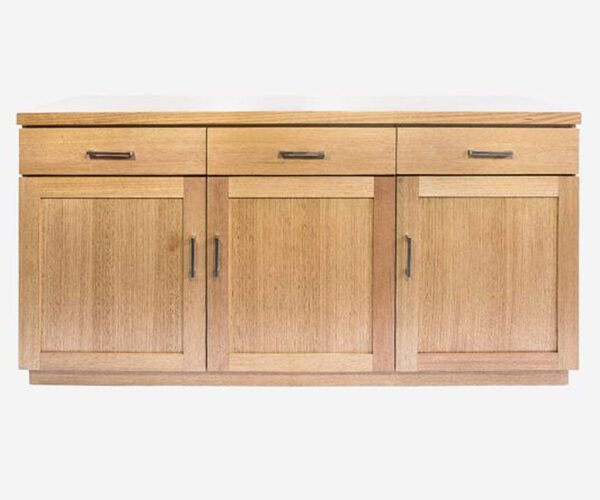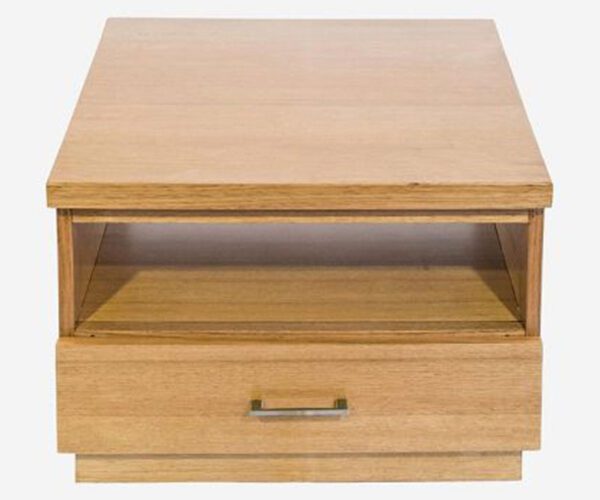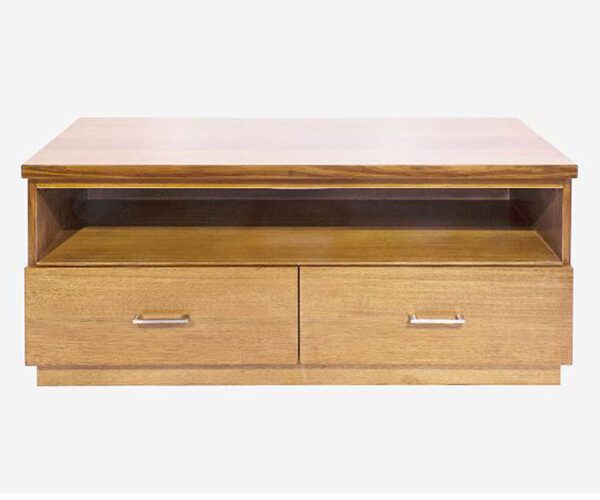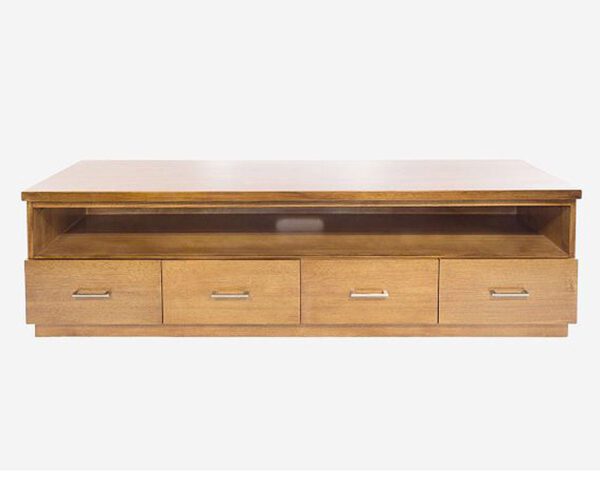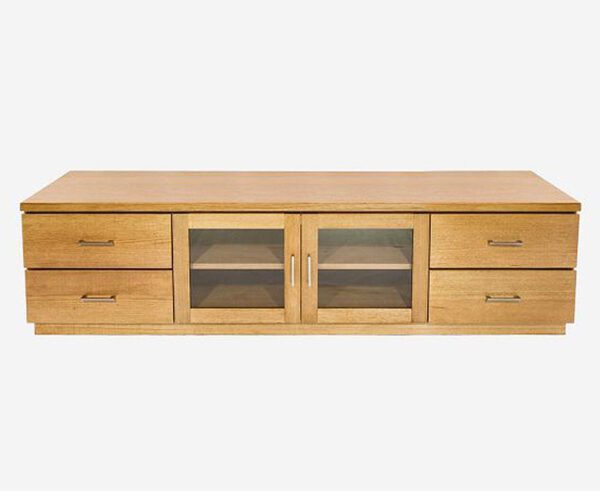High-Performing Aged Care Facilities: Lessons from Industry Leaders Around the World

The aged care industry is a complex and challenging landscape, but one that is essential for society. High-performing aged care facilities are those that consistently deliver quality care, maintain high standards of safety and hygiene, foster a positive living environment, and successfully meet the diverse needs of their residents. They are led by industry leaders who have honed their strategies over time and have valuable lessons to share. Let’s delve into these insights.
Understanding the Resident’s Needs
High-performing facilities prioritize understanding the unique needs of each resident. They acknowledge that every individual has different health conditions, preferences, and lifestyle habits. By taking the time to understand these nuances, they can provide personalized care that enhances the resident’s quality of life. For instance, St. John’s Senior Services in Rochester, New York, uses a holistic approach, focusing on physical, emotional, spiritual, and social wellness.
Here are some tips on how to effectively understand the needs of aged care residents:
- Conduct Comprehensive Assessments: Regularly conduct physical, mental, and emotional assessments to understand each resident’s health status, cognitive abilities, and emotional well-being. These evaluations should involve medical professionals and should be repeated periodically.
- Engage in Personal Conversations: Spend quality time with residents and engage them in conversations about their likes, dislikes, hobbies, and preferences. This can provide valuable insight into their lifestyle and personal needs.
- Observe Daily Activities: Observing residents during their daily routines can reveal a lot about their capabilities, challenges, and preferences. It can help identify any difficulties they may have with tasks like eating, bathing, or moving around.
- Involve Family Members: Family members can provide a wealth of information about a resident’s history, preferences, and personality. They can also give insights into any changes in behavior or health that staff might not notice.
- Use Surveys and Feedback Forms: Regularly ask residents for feedback on the services and care provided. This can help identify areas for improvement and ensure their needs are being met.
- Implement Person-Centered Care: This approach focuses on treating the resident as an individual with their own unique needs and preferences, rather than just a patient. It involves including residents in decision-making processes about their care and daily activities.
- Continual Staff Training: Ensure staff are trained to recognize and respond to the diverse needs of residents. This includes understanding how to communicate effectively and empathetically with residents, and how to manage specific health conditions.
- Use Technology: Use technology like electronic health records to keep track of each resident’s health status, medications, and care needs. There are also technologies available that can help assess and monitor a resident’s cognitive function, mobility, and daily activity levels.
Investing in Staff Training and Development
Aged care leaders understand that their staff are their greatest asset. Therefore, they invest in regular training and development to ensure their team is equipped with the latest knowledge and skills. They also foster a supportive work environment that values employee wellbeing and job satisfaction. For example, Juniper, a leading provider in Western Australia, has an ongoing commitment to staff training, and they encourage career development within the organization.
Investing in staff training and development in aged care facilities is paramount for improving service quality, staff retention, and overall resident satisfaction. Here are some key strategies:
- Formal Orientation Program: Start with a comprehensive orientation program that familiarizes new recruits with the facility’s policies, culture, and expectations. This can help new staff members feel more confident and integrated into their roles.
- Cross-Functional Training: Implement cross-functional training to enhance the versatility of your staff. This approach allows employees to understand different roles within the facility and fosters a collaborative environment.
- Career Planning: Provide clear paths for career progression within the organization. This not only helps in retaining staff but also motivates them to improve their skills and performance.
- Continual Professional Skills Development: Regularly update and refresh professional skills training to ensure staff are up-to-date with the latest best practices in aged care.
- Mentorship Opportunities: Establish mentorship programs where less experienced staff can learn from seasoned professionals. This can boost confidence and competence.
- Frequent Reviews: Conduct regular performance reviews to identify areas of strength and improvement. This can help staff feel valued and understood, and provide direction for future training.
- External Experts: Bring in industry experts or trainers for specialized workshops or seminars. This can provide staff with fresh perspectives and advanced knowledge.
- Leadership Training: Develop leadership training programs specifically for those in managerial or supervisory roles. Effective leadership can greatly enhance team performance and workplace culture.
- Safety Culture: Develop a robust safety culture through specific training modules. This ensures that all staff are aware of safety protocols and can contribute to a safer environment for residents.
- Allocate Time for Training: Ensure that staff have designated time for training. Avoid burnout by not overloading employees with work and training simultaneously.
Incorporating Technology
Technology plays a crucial role in modern aged care facilities. High-performing facilities are quick to adopt innovative solutions that can improve care delivery and operational efficiency. This might include electronic health records, telehealth services, or smart home technologies to support independent living. For instance, Silverado Senior Living in California has integrated technology into their care model, including memory-enhancing games and GPS tracking for residents with dementia.
Here are some tips on how to effectively integrate technology in aged care facilities:
- Electronic Health Records (EHR): Implement EHR systems to streamline documentation, reduce errors, and facilitate seamless communication among staff members. They allow for easy access to patient histories, medication details, and care plans.
- Telehealth Services: Utilize telehealth technologies to offer remote consultations, monitoring, and follow-ups. This can be particularly beneficial for residents with mobility issues or during times when in-person visits are not feasible.
- Smart Home Technologies: Equip rooms with smart home technologies such as automated lighting, fall detection sensors, and voice-activated devices. These can enhance safety and independence for residents.
- Wearable Devices: Use wearable devices like smartwatches to monitor vital signs, sleep patterns, and physical activity levels. This can provide valuable data for personalized care planning.
- Virtual Reality (VR): VR can be used for therapeutic purposes, such as reducing anxiety and depression or providing cognitive stimulation for dementia patients.
- Robotics: Consider integrating robotic technology for tasks like medication dispensing or as companionship robots, which can interact with residents and keep them engaged.
- Staff Training: Ensure staff members are adequately trained to use new technologies. This will increase their confidence and proficiency, leading to better utilization of these tools.
- Plan for Technology Integration: Create a strategic plan for technology integration. This should outline the technologies to be adopted, the implementation process, and how they will improve resident care.
- Resident Involvement: Involve residents in the process of technology adoption. Understand their comfort level with technology and address any concerns they may have.
- Data Security: With the use of digital technologies, it’s crucial to prioritize data security. Implement robust security measures to protect sensitive resident information.
Engaging with Families
Family engagement is another common trait among top-performing facilities. They recognize the importance of family in a resident’s life and actively encourage regular communication and involvement. Some facilities provide regular updates through apps or online portals, while others host family events or offer family counselling. The Hebrew Home at Riverdale in New York is renowned for its strong family programs, which include counseling, educational seminars, and special events.
Here are some tips on how to effectively engage with families:
- Open Lines of Communication: Maintain regular communication with family members through various channels like emails, phone calls, newsletters, or meetings. Ensure they are kept informed about their loved one’s health status, changes in care plans, and any events or activities.
- Family Councils: Establish family councils within your facility. These councils can provide a platform for family members to voice their concerns, suggestions, or feedback and can foster a sense of community.
- Involvement in Care Planning: Involve family members in care planning processes. They often know their loved ones best and can provide valuable insights into their preferences and needs.
- Educational Programs: Provide educational programs for families on topics such as understanding the aging process, managing dementia, or navigating health care decisions. This can help them better understand and support their loved one’s journey.
- Feedback Mechanisms: Implement mechanisms for families to provide feedback, such as surveys or suggestion boxes. Regularly review this feedback and make necessary improvements.
- Respect and Empathy: Treat all family members with respect and empathy. Recognize that placing a loved one in aged care can be a difficult decision, and they may have concerns or fears.
- Family Visitation Areas: Create comfortable and welcoming family visitation areas. This not only encourages more frequent visits but also shows families that you value their involvement.
- Involve in Activities: Encourage family members to participate in activities with the residents. This can strengthen the bond between residents and their families and improve the overall well-being of residents.
- Transparency: Be transparent with families, especially when it comes to challenges or issues. Honesty builds trust and can lead to more productive problem-solving.
Fostering a Positive Living Environment
High-performing aged care facilities strive to create a positive living environment where residents feel comfortable, safe, and valued. They do this by offering engaging activities, maintaining clean and pleasant facilities, and promoting a culture of respect and dignity. The Eden Alternative, a philosophy adopted by many leading facilities worldwide, emphasizes creating a homelike environment that combats loneliness, helplessness, and boredom.
Here are some tips on how to achieve the a positive living environment in aged care:
- Respect Individuality: Treat each resident as an individual with unique needs, preferences, and histories. Personalize care and respect their choices whenever possible.
- Promote Independence: Enable residents to do as much for themselves as they can to maintain their independence and dignity. This can be achieved through accessible design features and assistive technologies.
- Encourage Social Interaction: Regular social activities can help prevent feelings of loneliness and isolation. Organize group outings, hobby clubs, or communal meals to foster a sense of community.
- Physical Comfort: Ensure that rooms and common areas are comfortable, clean, and safe. Natural lighting, comfortable furniture, and easy navigation can greatly enhance the living environment.
- Engage with Nature: Provide opportunities for residents to engage with nature, such as maintaining a garden, or arranging seating areas with views of the outdoors.
- Cultivate a Positive Staff Culture: Encourage a respectful, empathetic, and positive culture among staff members. Happy staff contribute to a positive environment for residents.
- Nutritious and Appealing Meals: Good nutrition is essential for health, but meal times should also be enjoyable. Serve a variety of tasty and visually appealing meals, and accommodate individual dietary preferences and needs.
- Regular Exercise: Incorporate regular physical activity into the daily routine. This can improve physical health, mood, and sleep quality.
- Incorporate Pets: If possible, consider having a facility pet or schedule regular visits from therapy animals. Interacting with animals can provide comfort and joy.
- Recognition of Special Occasions: Celebrating birthdays, holidays, and personal achievements can make residents feel special and valued.
Continuous Improvement
Finally, successful aged care leaders understand that there is always room for improvement. They regularly evaluate their performance, seek feedback from residents and staff, and are willing to make changes when necessary. They are committed to continuous learning and are always looking for ways to enhance their service. For example, the Netherlands-based Hogeweyk dementia village constantly assesses their practices to ensure they are meeting the needs of their residents.
High-performing aged care facilities don’t achieve their status overnight. It requires a deep commitment to excellence, a willingness to learn and adapt, and a genuine passion for enhancing the lives of residents. While the challenges are significant, the rewards – in terms of resident satisfaction and quality of life – are truly priceless.
The lessons from industry leaders provide a roadmap for those aspiring to improve their own facilities. By investing in staff, embracing technology, engaging families, fostering a positive environment, and committing to continuous improvement, any aged care facility can enhance its performance and make a meaningful difference in the lives of its residents.
FAQs About High Performing Aged Care Facilities
What are some key areas to focus on when seeking to improve the functioning of an aged care facility?
Key areas include staff training, resident care, facility infrastructure, communication systems, and overall operational efficiency.
How can staff training contribute to the improvement of an aged care facility?
Comprehensive staff training enhances caregiving skills, improves communication, and ensures that staff members are well-equipped to meet the diverse needs of residents.
What strategies can be implemented to enhance resident care in an aged care facility?
Strategies may include personalized care plans, regular health assessments, social engagement programs, and the implementation of technology for better monitoring and communication.
How can the facility infrastructure be improved to better meet the needs of residents?
Facility improvements may involve creating accessible spaces, implementing safety features, incorporating therapeutic environments, and ensuring the overall design enhances the residents’ quality of life.
What role does technology play in improving the functioning of aged care facilities?
Technology can improve communication, streamline administrative tasks, enhance healthcare monitoring, and contribute to the overall efficiency of the facility.
How can communication systems be optimized to facilitate better coordination among staff and with residents?
Implementing efficient communication systems, such as digital platforms or regular team meetings, fosters better collaboration among staff and ensures residents receive consistent and quality care.
Are there specific measures to enhance the social and recreational aspects of an aged care facility?
Yes, introducing varied social activities, recreational programs, and creating communal spaces can significantly enhance the social well-being of residents and contribute to a more vibrant living environment.
What steps can be taken to address concerns related to staff turnover in aged care facilities?
Addressing staff turnover may involve offering professional development opportunities, recognizing and rewarding staff achievements, and creating a positive and supportive work culture.
How can the feedback of residents and their families be incorporated into the improvement process?
Regular surveys, feedback sessions, and resident and family councils provide valuable insights. Incorporating this feedback into decision-making processes ensures that improvements align with the needs and preferences of those being served.
What are the benefits of adopting a person-centered care approach in aged care facilities?
A person-centered care approach focuses on the individual needs and preferences of residents, promoting autonomy and dignity. This approach can lead to improved resident satisfaction and overall well-being.
Popular Choices for Aged Care Facility Seating
Creating a comfortable and supportive environment in aged care facilities hinges on furniture decisions that prioritize comfort, safety, personalization, and social interaction, ultimately enhancing the residents’ well-being and quality of life.
More News
High-Performing Aged Care Facilities: Lessons from Industry Leaders Around the World

The aged care industry is a complex and challenging landscape, but one that is essential for society. High-performing aged care facilities are those that consistently deliver quality care, maintain high standards of safety and hygiene, foster a positive living environment, and successfully meet the diverse needs of their residents. They are led by industry leaders who have honed their strategies over time and have valuable lessons to share. Let’s delve into these insights.
Understanding the Resident’s Needs
High-performing facilities prioritize understanding the unique needs of each resident. They acknowledge that every individual has different health conditions, preferences, and lifestyle habits. By taking the time to understand these nuances, they can provide personalized care that enhances the resident’s quality of life. For instance, St. John’s Senior Services in Rochester, New York, uses a holistic approach, focusing on physical, emotional, spiritual, and social wellness.
Here are some tips on how to effectively understand the needs of aged care residents:
- Conduct Comprehensive Assessments: Regularly conduct physical, mental, and emotional assessments to understand each resident’s health status, cognitive abilities, and emotional well-being. These evaluations should involve medical professionals and should be repeated periodically.
- Engage in Personal Conversations: Spend quality time with residents and engage them in conversations about their likes, dislikes, hobbies, and preferences. This can provide valuable insight into their lifestyle and personal needs.
- Observe Daily Activities: Observing residents during their daily routines can reveal a lot about their capabilities, challenges, and preferences. It can help identify any difficulties they may have with tasks like eating, bathing, or moving around.
- Involve Family Members: Family members can provide a wealth of information about a resident’s history, preferences, and personality. They can also give insights into any changes in behavior or health that staff might not notice.
- Use Surveys and Feedback Forms: Regularly ask residents for feedback on the services and care provided. This can help identify areas for improvement and ensure their needs are being met.
- Implement Person-Centered Care: This approach focuses on treating the resident as an individual with their own unique needs and preferences, rather than just a patient. It involves including residents in decision-making processes about their care and daily activities.
- Continual Staff Training: Ensure staff are trained to recognize and respond to the diverse needs of residents. This includes understanding how to communicate effectively and empathetically with residents, and how to manage specific health conditions.
- Use Technology: Use technology like electronic health records to keep track of each resident’s health status, medications, and care needs. There are also technologies available that can help assess and monitor a resident’s cognitive function, mobility, and daily activity levels.
Investing in Staff Training and Development
Aged care leaders understand that their staff are their greatest asset. Therefore, they invest in regular training and development to ensure their team is equipped with the latest knowledge and skills. They also foster a supportive work environment that values employee wellbeing and job satisfaction. For example, Juniper, a leading provider in Western Australia, has an ongoing commitment to staff training, and they encourage career development within the organization.
Investing in staff training and development in aged care facilities is paramount for improving service quality, staff retention, and overall resident satisfaction. Here are some key strategies:
- Formal Orientation Program: Start with a comprehensive orientation program that familiarizes new recruits with the facility’s policies, culture, and expectations. This can help new staff members feel more confident and integrated into their roles.
- Cross-Functional Training: Implement cross-functional training to enhance the versatility of your staff. This approach allows employees to understand different roles within the facility and fosters a collaborative environment.
- Career Planning: Provide clear paths for career progression within the organization. This not only helps in retaining staff but also motivates them to improve their skills and performance.
- Continual Professional Skills Development: Regularly update and refresh professional skills training to ensure staff are up-to-date with the latest best practices in aged care.
- Mentorship Opportunities: Establish mentorship programs where less experienced staff can learn from seasoned professionals. This can boost confidence and competence.
- Frequent Reviews: Conduct regular performance reviews to identify areas of strength and improvement. This can help staff feel valued and understood, and provide direction for future training.
- External Experts: Bring in industry experts or trainers for specialized workshops or seminars. This can provide staff with fresh perspectives and advanced knowledge.
- Leadership Training: Develop leadership training programs specifically for those in managerial or supervisory roles. Effective leadership can greatly enhance team performance and workplace culture.
- Safety Culture: Develop a robust safety culture through specific training modules. This ensures that all staff are aware of safety protocols and can contribute to a safer environment for residents.
- Allocate Time for Training: Ensure that staff have designated time for training. Avoid burnout by not overloading employees with work and training simultaneously.
Incorporating Technology
Technology plays a crucial role in modern aged care facilities. High-performing facilities are quick to adopt innovative solutions that can improve care delivery and operational efficiency. This might include electronic health records, telehealth services, or smart home technologies to support independent living. For instance, Silverado Senior Living in California has integrated technology into their care model, including memory-enhancing games and GPS tracking for residents with dementia.
Here are some tips on how to effectively integrate technology in aged care facilities:
- Electronic Health Records (EHR): Implement EHR systems to streamline documentation, reduce errors, and facilitate seamless communication among staff members. They allow for easy access to patient histories, medication details, and care plans.
- Telehealth Services: Utilize telehealth technologies to offer remote consultations, monitoring, and follow-ups. This can be particularly beneficial for residents with mobility issues or during times when in-person visits are not feasible.
- Smart Home Technologies: Equip rooms with smart home technologies such as automated lighting, fall detection sensors, and voice-activated devices. These can enhance safety and independence for residents.
- Wearable Devices: Use wearable devices like smartwatches to monitor vital signs, sleep patterns, and physical activity levels. This can provide valuable data for personalized care planning.
- Virtual Reality (VR): VR can be used for therapeutic purposes, such as reducing anxiety and depression or providing cognitive stimulation for dementia patients.
- Robotics: Consider integrating robotic technology for tasks like medication dispensing or as companionship robots, which can interact with residents and keep them engaged.
- Staff Training: Ensure staff members are adequately trained to use new technologies. This will increase their confidence and proficiency, leading to better utilization of these tools.
- Plan for Technology Integration: Create a strategic plan for technology integration. This should outline the technologies to be adopted, the implementation process, and how they will improve resident care.
- Resident Involvement: Involve residents in the process of technology adoption. Understand their comfort level with technology and address any concerns they may have.
- Data Security: With the use of digital technologies, it’s crucial to prioritize data security. Implement robust security measures to protect sensitive resident information.
Engaging with Families
Family engagement is another common trait among top-performing facilities. They recognize the importance of family in a resident’s life and actively encourage regular communication and involvement. Some facilities provide regular updates through apps or online portals, while others host family events or offer family counselling. The Hebrew Home at Riverdale in New York is renowned for its strong family programs, which include counseling, educational seminars, and special events.
Here are some tips on how to effectively engage with families:
- Open Lines of Communication: Maintain regular communication with family members through various channels like emails, phone calls, newsletters, or meetings. Ensure they are kept informed about their loved one’s health status, changes in care plans, and any events or activities.
- Family Councils: Establish family councils within your facility. These councils can provide a platform for family members to voice their concerns, suggestions, or feedback and can foster a sense of community.
- Involvement in Care Planning: Involve family members in care planning processes. They often know their loved ones best and can provide valuable insights into their preferences and needs.
- Educational Programs: Provide educational programs for families on topics such as understanding the aging process, managing dementia, or navigating health care decisions. This can help them better understand and support their loved one’s journey.
- Feedback Mechanisms: Implement mechanisms for families to provide feedback, such as surveys or suggestion boxes. Regularly review this feedback and make necessary improvements.
- Respect and Empathy: Treat all family members with respect and empathy. Recognize that placing a loved one in aged care can be a difficult decision, and they may have concerns or fears.
- Family Visitation Areas: Create comfortable and welcoming family visitation areas. This not only encourages more frequent visits but also shows families that you value their involvement.
- Involve in Activities: Encourage family members to participate in activities with the residents. This can strengthen the bond between residents and their families and improve the overall well-being of residents.
- Transparency: Be transparent with families, especially when it comes to challenges or issues. Honesty builds trust and can lead to more productive problem-solving.
Fostering a Positive Living Environment
High-performing aged care facilities strive to create a positive living environment where residents feel comfortable, safe, and valued. They do this by offering engaging activities, maintaining clean and pleasant facilities, and promoting a culture of respect and dignity. The Eden Alternative, a philosophy adopted by many leading facilities worldwide, emphasizes creating a homelike environment that combats loneliness, helplessness, and boredom.
Here are some tips on how to achieve the a positive living environment in aged care:
- Respect Individuality: Treat each resident as an individual with unique needs, preferences, and histories. Personalize care and respect their choices whenever possible.
- Promote Independence: Enable residents to do as much for themselves as they can to maintain their independence and dignity. This can be achieved through accessible design features and assistive technologies.
- Encourage Social Interaction: Regular social activities can help prevent feelings of loneliness and isolation. Organize group outings, hobby clubs, or communal meals to foster a sense of community.
- Physical Comfort: Ensure that rooms and common areas are comfortable, clean, and safe. Natural lighting, comfortable furniture, and easy navigation can greatly enhance the living environment.
- Engage with Nature: Provide opportunities for residents to engage with nature, such as maintaining a garden, or arranging seating areas with views of the outdoors.
- Cultivate a Positive Staff Culture: Encourage a respectful, empathetic, and positive culture among staff members. Happy staff contribute to a positive environment for residents.
- Nutritious and Appealing Meals: Good nutrition is essential for health, but meal times should also be enjoyable. Serve a variety of tasty and visually appealing meals, and accommodate individual dietary preferences and needs.
- Regular Exercise: Incorporate regular physical activity into the daily routine. This can improve physical health, mood, and sleep quality.
- Incorporate Pets: If possible, consider having a facility pet or schedule regular visits from therapy animals. Interacting with animals can provide comfort and joy.
- Recognition of Special Occasions: Celebrating birthdays, holidays, and personal achievements can make residents feel special and valued.
Continuous Improvement
Finally, successful aged care leaders understand that there is always room for improvement. They regularly evaluate their performance, seek feedback from residents and staff, and are willing to make changes when necessary. They are committed to continuous learning and are always looking for ways to enhance their service. For example, the Netherlands-based Hogeweyk dementia village constantly assesses their practices to ensure they are meeting the needs of their residents.
High-performing aged care facilities don’t achieve their status overnight. It requires a deep commitment to excellence, a willingness to learn and adapt, and a genuine passion for enhancing the lives of residents. While the challenges are significant, the rewards – in terms of resident satisfaction and quality of life – are truly priceless.
The lessons from industry leaders provide a roadmap for those aspiring to improve their own facilities. By investing in staff, embracing technology, engaging families, fostering a positive environment, and committing to continuous improvement, any aged care facility can enhance its performance and make a meaningful difference in the lives of its residents.
FAQs About High Performing Aged Care Facilities
What are some key areas to focus on when seeking to improve the functioning of an aged care facility?
Key areas include staff training, resident care, facility infrastructure, communication systems, and overall operational efficiency.
How can staff training contribute to the improvement of an aged care facility?
Comprehensive staff training enhances caregiving skills, improves communication, and ensures that staff members are well-equipped to meet the diverse needs of residents.
What strategies can be implemented to enhance resident care in an aged care facility?
Strategies may include personalized care plans, regular health assessments, social engagement programs, and the implementation of technology for better monitoring and communication.
How can the facility infrastructure be improved to better meet the needs of residents?
Facility improvements may involve creating accessible spaces, implementing safety features, incorporating therapeutic environments, and ensuring the overall design enhances the residents’ quality of life.
What role does technology play in improving the functioning of aged care facilities?
Technology can improve communication, streamline administrative tasks, enhance healthcare monitoring, and contribute to the overall efficiency of the facility.
How can communication systems be optimized to facilitate better coordination among staff and with residents?
Implementing efficient communication systems, such as digital platforms or regular team meetings, fosters better collaboration among staff and ensures residents receive consistent and quality care.
Are there specific measures to enhance the social and recreational aspects of an aged care facility?
Yes, introducing varied social activities, recreational programs, and creating communal spaces can significantly enhance the social well-being of residents and contribute to a more vibrant living environment.
What steps can be taken to address concerns related to staff turnover in aged care facilities?
Addressing staff turnover may involve offering professional development opportunities, recognizing and rewarding staff achievements, and creating a positive and supportive work culture.
How can the feedback of residents and their families be incorporated into the improvement process?
Regular surveys, feedback sessions, and resident and family councils provide valuable insights. Incorporating this feedback into decision-making processes ensures that improvements align with the needs and preferences of those being served.
What are the benefits of adopting a person-centered care approach in aged care facilities?
A person-centered care approach focuses on the individual needs and preferences of residents, promoting autonomy and dignity. This approach can lead to improved resident satisfaction and overall well-being.
Popular Choices for Aged Care Facility Seating
Creating a comfortable and supportive environment in aged care facilities hinges on furniture decisions that prioritize comfort, safety, personalization, and social interaction, ultimately enhancing the residents’ well-being and quality of life.
Commercial furniture by room
Based in Brisbane, we’re an Australian manufacturer of aged care furniture, retirement living furniture, hospital & healthcare furniture, hotel & accommodation furniture and student accommodation furniture. We also supply a range of commercial office furniture.
Discover the FHG Look Book: Your Source of Inspiration for Quality Australian-Made Commercial Furniture
- Quality Craftsmanship: See why we’ve been a trusted partner for over 25 years.
- Local Excellence: Learn how our Brisbane team ensures the highest standards.
- Inspiration and Ideas: Find innovative furniture solutions for any environment.
Don’t miss the opportunity to transform your commercial space with FHG’s expertly crafted furniture. Download the FHG Look Book today and start your journey towards exceptional design and quality.


